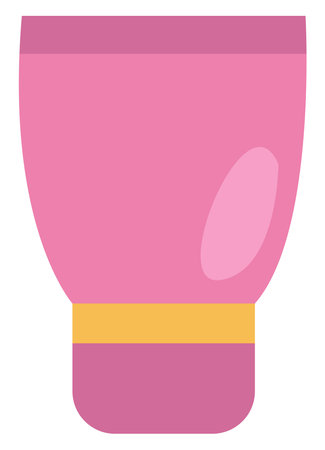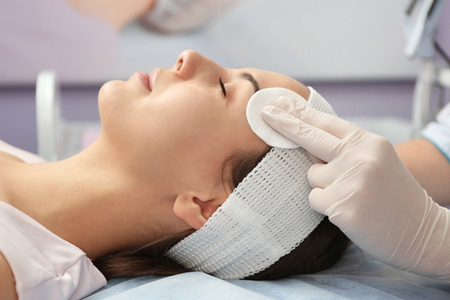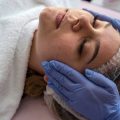Introduction to Thread Lifts and Their Popularity in the UK
Thread lifts have swiftly emerged as a sought-after anti-ageing solution for those seeking visible results without the downtime or invasiveness of traditional surgical facelifts. In essence, a thread lift is a minimally invasive procedure where temporary, medical-grade threads are strategically inserted under the skin to gently lift and tighten sagging facial tissues. These threads, often made from materials such as polydioxanone (PDO), stimulate collagen production as they dissolve naturally over time, contributing to longer-lasting skin firmness and rejuvenation. The appeal of thread lifts lies not only in their subtle yet effective lifting capabilities but also in their convenience—most procedures can be completed within an hour with minimal recovery time required. In the UK, there has been a noticeable rise in demand for thread lifts among individuals who wish to address early signs of ageing or maintain their youthful appearance without resorting to more aggressive surgical interventions. This trend is further fuelled by increasing awareness of non-surgical aesthetic treatments and a cultural shift towards proactive self-care, making thread lifts an increasingly popular choice among Britons looking for tailored, age-appropriate cosmetic enhancements.
Understanding the Ageing Process: What Changes Happen at Different Stages?
Facial ageing is a complex, gradual process influenced by genetics, lifestyle, and environmental factors. Understanding how ageing manifests across different age groups is crucial in determining when interventions like thread lifts may be most effective or appropriate. As people in the UK become more proactive about maintaining a youthful appearance, knowing what to expect at each stage helps individuals make informed decisions about anti-ageing solutions.
How Facial Ageing Progresses by Age Group
The visible signs of facial ageing develop in distinct phases, each presenting unique concerns and motivating people to seek tailored cosmetic treatments. The following table breaks down common changes and motivations for intervention across age brackets:
| Age Group | Key Ageing Signs | Common Concerns | Typical Solutions Sought |
|---|---|---|---|
| 20s | Minimal; early dehydration lines, mild loss of radiance | Prevention, glow maintenance | Topical skincare, sun protection, basic facials |
| 30s | Fine lines (especially around eyes), subtle volume loss, uneven skin tone | Early wrinkles, tired look, desire for prevention | Advanced skincare, light peels, preventative injectables |
| 40s | Pronounced nasolabial folds, sagging jawline, reduced elasticity | Lifting and firming needs, mid-face volume loss | Thread lifts, fillers, non-surgical tightening treatments |
| 50s+ | Deep wrinkles, jowls, significant sagging and deflation of facial contours | Dramatic rejuvenation, correction of laxity and droopiness | Surgical lifts, combination therapies including thread lifts for subtle enhancement or maintenance post-surgery |
The Evolution of Aesthetic Preferences and Goals in the UK Context
Aesthetics preferences in the UK are evolving towards subtlety and natural-looking results. In their 30s and 40s, many British individuals begin exploring minimally invasive options like thread lifts to refresh their appearance without drastic change or downtime. Older patients may combine thread lifts with other procedures to address advanced signs of ageing while maintaining a refined look.
The Role of Thread Lifts Across Age Groups
Thread lifts can be particularly advantageous for those in their late 30s to 50s who desire visible lifting but are not ready for surgical interventions. Younger adults may benefit from threads as a preventative measure or to enhance facial contour with minimal invasiveness. Ultimately, the right timing depends on individual anatomy, expectations, and lifestyle demands.

3. Thread Lifts in Your 20s and 30s: Proactive Versus Reactive Approaches
In recent years, the UK has witnessed a notable shift in the attitudes of younger adults towards aesthetic treatments, with more individuals in their twenties and thirties considering procedures like thread lifts as part of a proactive anti-ageing strategy. This trend reflects a broader societal movement where preventative care is increasingly valued, not just in health but also in personal aesthetics. The question arises: is it appropriate for this age group to opt for thread lifts, or should such interventions be reserved for later life when signs of ageing are more pronounced?
Amongst millennials and Gen Z, there is a growing awareness of skin health and longevity, driven by social media influence and advancements in non-surgical cosmetic solutions. Thread lifts, which offer subtle lifting and collagen stimulation without major downtime, are viewed by some as an appealing alternative to more invasive procedures. However, experts caution that while thread lifts can offer mild enhancement for those experiencing early laxity or volume loss, they are not universally recommended for all young adults.
The suitability of thread lifts in this demographic depends largely on individual anatomy and specific concerns. For those with genetically predisposed facial sagging or early onset jowling, a thread lift may provide both physical improvement and psychological reassurance. However, for most people in their twenties and early thirties with minimal signs of ageing, a robust skincare regimen and less invasive treatments—such as chemical peels or light-based therapies—often suffice.
Ultimately, the decision to undergo a thread lift at a younger age should be based on a thorough consultation with a qualified practitioner who understands the nuances of facial anatomy and ageing patterns specific to British skin types. It is also vital to manage expectations; thread lifts are not a substitute for surgical facelifts, nor do they halt the natural ageing process. They serve best as a subtle intervention for those with mild changes or as part of a broader preventative approach tailored to long-term skin health.
4. Thread Lifts in Your 40s and 50s: Restoring Volume and Contours
As we transition into our 40s and 50s, the visible effects of ageing often become more pronounced, particularly in terms of facial volume loss, sagging skin, and diminished contours. The cumulative impact of gravity, sun exposure, and a natural decline in collagen production tends to manifest in areas such as the cheeks, jawline, and neck—issues that many individuals in the UK seek to address for a refreshed yet natural appearance. At this stage, thread lifts emerge as a compelling option for those who wish to avoid the downtime and invasiveness associated with traditional surgical facelifts.
Common Concerns for Mid-Life Faces
By mid-life, facial changes typically include:
| Concern | Description |
|---|---|
| Loss of Volume | Hollows around the cheeks and temples due to reduced subcutaneous fat. |
| Sagging Skin | Drooping jowls and less defined jawlines caused by collagen breakdown. |
| Deepening Folds | Nasolabial folds and marionette lines become more prominent. |
Thread Lifts as a Solution
Thread lifts offer an innovative, minimally invasive approach tailored for individuals in their 40s and 50s who wish to restore youthful contours without resorting to full surgical intervention. By using dissolvable threads strategically placed beneath the skin, practitioners can achieve subtle yet effective lifting results. This technique not only elevates sagging tissue but also stimulates collagen production over time, enhancing firmness long after the procedure itself.
Why Consider Thread Lifts at This Age?
- Natural-Looking Results: Modern thread lift technology is designed to provide gentle elevation, avoiding the ‘pulled’ look sometimes associated with older facelift techniques.
- No Extended Downtime: Most clients can resume normal activities within days—a key consideration for busy professionals or parents.
- Cultural Acceptance: In the UK, there is a growing preference for discreet procedures that enhance appearance without obvious signs of intervention.
Comparative Overview: Thread Lifts vs. Other Treatments
| Treatment | Best For | Recovery Time |
|---|---|---|
| Thread Lift | Mild-to-moderate sagging; redefining contours | A few days |
| Dermal Fillers | Restoring lost volume; smoothing wrinkles | Straight away |
| Surgical Facelift | Significant laxity; dramatic change desired | Several weeks |
This age group stands to benefit most from early intervention—choosing thread lifts before severe ageing occurs often yields more natural and longer-lasting improvements. For many across the UK seeking a refreshed yet authentic look in mid-life, thread lifts represent a sophisticated anti-ageing solution aligned with contemporary aesthetic trends.
5. Thread Lifts for Over 60s: Expectations, Suitability, and Alternatives
For individuals in their sixties and beyond, the effectiveness of thread lifts as an anti-ageing solution requires careful consideration. Mature skin typically presents with more pronounced laxity, reduced elasticity, and deeper lines, all of which can impact how well thread lifts perform in this age group. While thread lifts can still offer a degree of lifting and rejuvenation, expectations should be realistic; results may be subtler compared to those seen in younger patients.
Assessing Suitability for Mature Skin
The suitability of thread lifts for people over 60 largely depends on individual skin condition rather than age alone. Those with mild to moderate sagging and good skin thickness may experience satisfactory improvements, particularly in areas such as the jawline or cheeks. However, severe sagging or significant loss of volume may limit the effectiveness of this minimally invasive technique. A thorough consultation with an experienced practitioner familiar with mature skin is essential to determine candidacy and predict likely outcomes.
Key Considerations for Success
Successful thread lift outcomes in older adults hinge on several factors: the quality and resilience of the skin, overall health status, and realistic expectations regarding what non-surgical procedures can achieve. In the UK, it is common practice to combine thread lifts with other non-invasive treatments—such as dermal fillers or radiofrequency therapy—to enhance results. Practitioners will also assess medical history to rule out contraindications and ensure safe application.
Alternative Treatments for Advanced Ageing
For those whose skin ageing has progressed beyond what a thread lift can correct, alternative options should be considered. Surgical facelifts remain the gold standard for dramatic rejuvenation but involve greater downtime and higher costs. Non-surgical alternatives popular in the UK include high-intensity focused ultrasound (HIFU), laser resurfacing, and advanced injectable treatments. These can either complement or substitute thread lifts depending on the patient’s needs, lifestyle, and desired results.
Ultimately, while thread lifts offer a minimally invasive route to a fresher appearance even for those over 60, tailoring the treatment plan to individual needs—and understanding both its potential and its limits—is crucial for satisfaction. Engaging with qualified practitioners who appreciate the nuances of mature skin ensures that every option is explored before proceeding.
6. Cultural Attitudes and Safety Standards for Thread Lifts in the UK
Thread lifts have steadily grown in popularity across the UK as a minimally invasive alternative to traditional facelifts, but British attitudes towards cosmetic enhancements remain nuanced and shaped by a blend of pragmatism, discretion, and an emphasis on safety. While there is increasing acceptance of aesthetic procedures among different age groups, many Britons approach anti-ageing solutions with caution, valuing subtlety and natural results over dramatic transformations.
The British Perspective on Cosmetic Enhancements
In the UK, conversations around cosmetic procedures such as thread lifts often centre on personal choice and individual empowerment. However, there is also a cultural inclination to avoid overt or excessive interventions. Many patients seek enhancements that refresh their appearance without making them look unrecognisable. This preference influences both the demand for thread lifts and the expectations placed upon practitioners to deliver understated, harmonious outcomes.
Regulatory Guidance and Clinical Standards
The regulatory environment in the UK is rigorous when it comes to non-surgical cosmetic treatments. The Care Quality Commission (CQC) oversees clinics providing regulated activities, and practitioners are expected to comply with guidance from bodies such as the General Medical Council (GMC) and Health Education England (HEE). These regulations are designed to ensure patient safety, ethical marketing, thorough consent processes, and high standards of clinical care. For thread lifts specifically, it is crucial that only qualified professionals perform these procedures using CE-marked products approved for use within the UK market.
Importance of Safety in Clinical Practice
Safety remains at the forefront of British clinical practice regarding thread lifts. Prospective patients are encouraged to research practitioners’ qualifications, ask about aftercare protocols, and verify clinic credentials. The focus on safety is particularly relevant for younger individuals considering early intervention, as well as older adults seeking more advanced rejuvenation. In every case, comprehensive consultations and realistic discussions about potential risks and benefits are integral to maintaining public trust in these anti-ageing solutions.
Conclusion
The British approach to thread lifts is defined by a balance between embracing innovation and upholding stringent safety standards. As interest grows across all age groups, adherence to regulatory guidance and a commitment to ethical practice are essential for delivering effective results while safeguarding patient wellbeing.
7. Conclusion: Deciding the Right Time for a Thread Lift
When considering a thread lift as an anti-ageing solution, timing and individual suitability are paramount, particularly for British patients who value both natural results and subtle rejuvenation. The decision is not solely about age, but rather a nuanced assessment of skin quality, degree of sagging, lifestyle expectations, and personal aesthetic goals. Early intervention in one’s thirties or early forties may help delay more invasive procedures by addressing mild to moderate laxity, while patients in their fifties and beyond can still benefit from thread lifts if they seek noticeable improvement without the downtime of surgery. It is crucial to consult with a qualified practitioner familiar with UK regulations and trends, ensuring that treatments are tailored to your unique facial structure and ageing pattern. Ultimately, the right time for a thread lift depends on your readiness to invest in preventative care, realistic expectations regarding outcomes, and a clear understanding of the procedure’s benefits and limitations within the context of contemporary British aesthetics. This considered approach ensures that each patient can make an informed choice aligned with their needs, aspirations, and the evolving standards of beauty across the UK.


